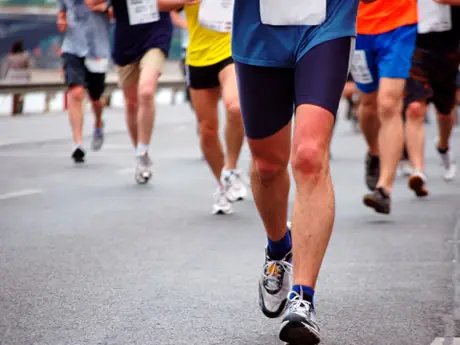While blistering tends to most commonly occur on the feet, chafing can happen all over the body. For instance, the inside of the thighs is one of the most vulnerable spots for chafing. Consider the fact that you take upwards of 2,000 steps in a single mile and that gives you an idea of how this can go from a nuisance to a serious issue. For men, chafing on the nipples commonly leads to bleeding and discomfort. For women, all manner of sports bra hotspots can occur, from beneath the band to under the shoulder straps.
More: 9 Top Sports Bras for Runners
"The most important thing you can do to prevent this is to have running clothes that wick moisture," says Ashley.
From technical socks to seam-free, wicking tops and shorts, these specially made garments can make all the difference. In addition to avoiding these issues, you'll also feel less weighed down by sweat-soaked clothing that isn't built for running.
More: Active Gear Scout: 10 Essentials for Rookie Runners
When Running Apparel Alone Doesn't Help
Even still, many runners continue to have issues despite wearing the proper clothing. This is where skin-lubricating products come in handy. By simply applying these to places like the thighs and feet prior to a race or workout, the majority of issues with blisters and chafing can be avoided. These become particularly necessary in long events, like marathons, or when the conditions are particularly hot and humid. These products are an inexpensive and easy solution to a major issue.
More: 24 Solutions to Embarrasing Issues Only Runners Understand
For those who have had repeated issues with certain spots, full coverage may be necessary. For men, bandages or specially designed nipple guards can mean the difference between an enjoyable race and an excruciating one. Similarly, blister bandages and liquid bandage, which is painted directly on the skin, can help combat incessant blistering on the feet.
More: 5 Common Foot Problems You Can Avoid
Since it can be nearly impossible to prevent a hotspot from getting worse once the skin is irritated, it is always best to prevent the problem in the first place. This means wearing technical garments designed for running and utilizing skin lubricating products from the very beginning. The last thing you want is to have a flesh wound derail an otherwise successful performance. As every runner knows, running is hard enough—any means by which discomfort can be avoided is welcome.
More: What to Pack in Your Race Bag
 Sign up for your next race.
Sign up for your next race.- 2
- of
- 2
About the Author

Get ACTIVE on the Go


Couch to 5K®
The best way to get new runners off the couch and across the finish line of their first 5K.
Available for iOS | Android







Discuss This Article